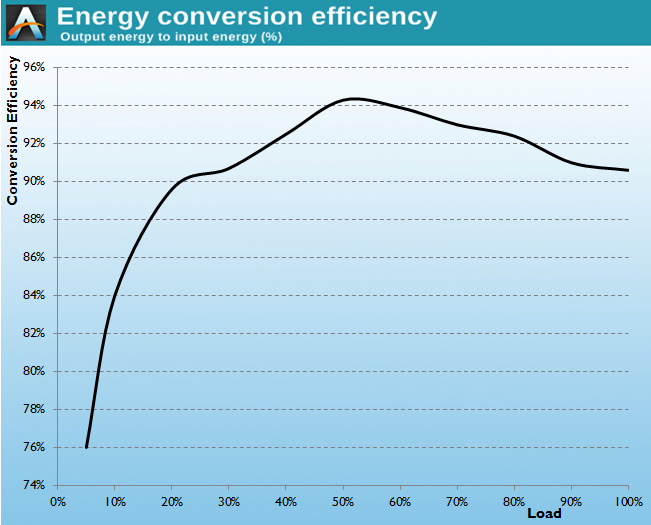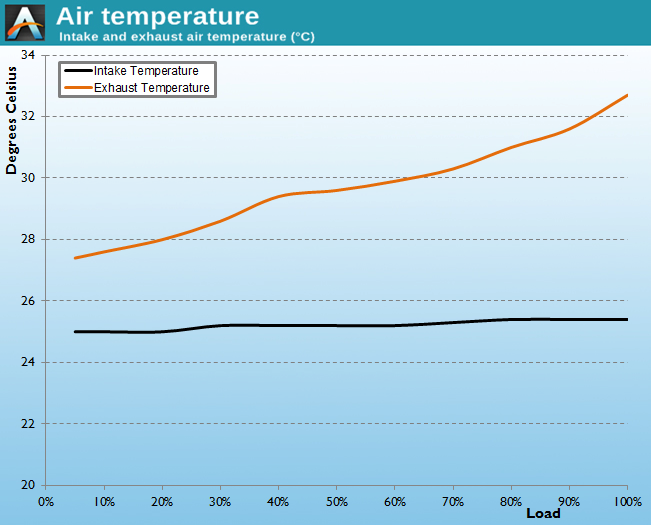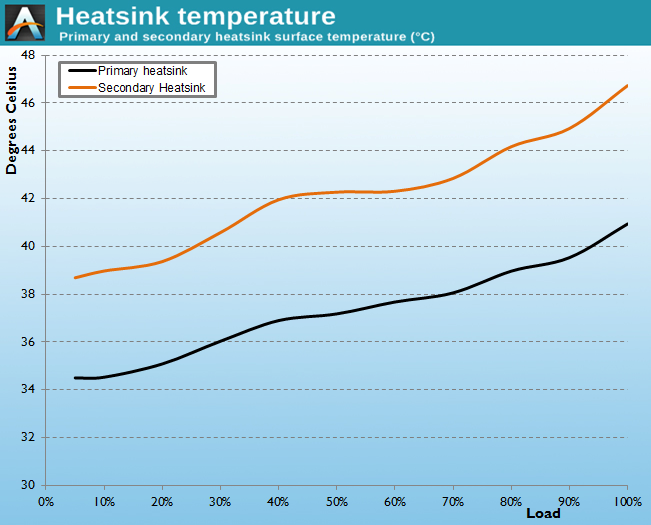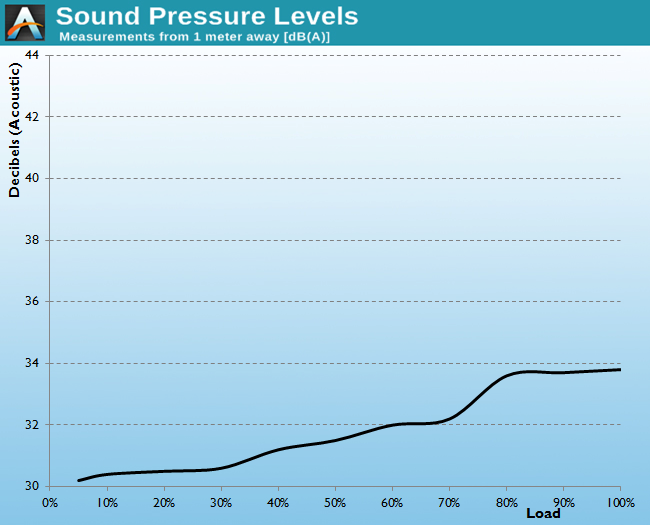Seasonic S12G 650W Power Supply Review
by E. Fylladitakis on February 28, 2014 2:20 PM EST- Posted in
- Cases/Cooling/PSUs
- Seasonic
- 80 Plus Gold
Test Equipment and Methodology
For the testing of PSUs, we are using high precision electronic loads with a maximum power draw of 2700W, a Rigol DS5042M 40MHz oscilloscope, an Extech 380803 power analyzer, two high precision UNI-T UT-325 digital thermometers, an Extech HD600 SPL meter, a self-designed hotbox, and various other bits and parts. For a thorough explanation of our testing methodology and more details on our equipment, please refer to our How We Test PSUs - 2014 Pipeline post.
Cold Test Results
At room temperature, the Seasonic S12G 650W unit easily honors its 80 Plus Gold certification, reaching up to 94.4% efficiency at 50% load. Inside the normal operating range of the power supply, which is between 20% and 100% load, the efficiency remains above 90% at all times. In fact, if the S12G was just a little more efficient while heavily stressed, it could hit 80 Plus Platinum status.
As expected, the efficiency drops sharply when the load is below 20% (130W in this case), dropping down to 76% with a 32W load, but it goes up to 84% when the load is increased to 65W. These are considered "out of range" conditions and do not affect the 80 Plus certification of the unit, but considering many modern PCs will idle at 40-60W, it's still worthwhile to look at performance at these loads. Of course, at 32W load the difference between 75% and 85% efficiency only amounts to around 5W at the outlet.
Both the air and the heatsink temperatures might appear a little high for a unit of this capacity and efficiency operating at room temperature, but that is because the fan of the Seasonic S12G 650W PSU is being "lazy" -- or "quiet" if you prefer. The fan is thermally controlled and it looks like Seasonic decided it didn't need to spin faster under such testing conditions. During our SPL testing, the fan reaches audible levels only after the unit hits ~80% of its rated output.














77 Comments
View All Comments
platos - Saturday, March 1, 2014 - link
I also want to see low wattage small form factor PSUs like the picoPSU and compatible bricks. I'm personally moving away from large desktops for my DIY PCs. I'm even hoping for pico and nano-ITX boards and cases to become popular.I'm guessing large desktops will mostly be confined to companies in the near future and they are more likely to buy PSUs as part of a complete system so they wouldn't directly care about individual PSU ratings.
E.Fyll - Saturday, March 1, 2014 - link
" My homeserver is pulling 35W from the wall right at this moment. "If you are not using a true RMS meter to read this figure, I am afraid that your actual power draw is way off. Especially with the PSU that you are using.
Daniel Egger - Sunday, March 2, 2014 - link
Actually that's what my APC UPS tells me which is also continuously read out so I also know the load profile over time and can even correlate with the temperature.Not too much of a fan reconnecting 24/7 servers too often from the mains just put different power reading hardware in between I must say.
From what I can tell the readings from the UPS is quite accurate: I've tested it with a variety of computer and other IT equipment using switching PSUs with a true RMS meter in between.
E.Fyll - Sunday, March 2, 2014 - link
The UPS has no true RMS reading, sorry...emn13 - Saturday, March 1, 2014 - link
It's the GPU's that are costing you. I've got a standard voltage, overclocked 4770k which is currently fully loaded and it's using 97W at the wall outlet; it idles at 20W - that's including power supply overhead. With some undervolting rather than overclocking I can get that down to 15W, with 1HDD and 3SSDs, but my motherboard isn't very friendly to undervolting so I decided it wasn't worth the bother.A single GPU, even if it's not the top of the line, can easily consume more than the entire rest of your system. You say you have two GPU's? Well, there you go: 20W for the base system, 20W for each GPU and you're in about the right ballpark.
mike55 - Friday, February 28, 2014 - link
Excellent article! I would definitely be interested in seeing an article about how to choose the right PSU. There is a lot of information out there, but a lot of it seems to suggest PSUs that can provide a lot more power than what I think should be necessary, resulting in less than optimal power conversion efficiency. It would be nice to see some more objective information. Although, I suppose there is some value in getting something over sized for future proofing. Especially for a quality PSU at less than $100.Egg - Friday, February 28, 2014 - link
IIRC the Seasonic X650 used to be this price with a modular interface. Well, I guess since the quality is just as good, and possibly even more efficient, we can hope for sales.tynopik - Friday, February 28, 2014 - link
where's the description of the cable?There used to be a chart breaking down each cable and the lengths to each connector:
http://www.anandtech.com/show/6168/rosewill-fortre...
also, isn't a shot of the wattage chart de rigeur?
extide - Saturday, March 1, 2014 - link
x2 these should be includedPcgeek21 - Friday, February 28, 2014 - link
I agree with Daniel; I would be very interested in the performance/efficiency of low wattage power supplies (200W-300W peak output). I run relatively low power servers at home 24/7 such that the 5W delta in power draw can add up over the 4-5 year lifetime of the equipment.I purchased an Antec EarthWatts EA-450 (http://www.eteknix.com/antec-earthwatts-platinum-4... several months ago for my current server. I would be very interested in determining if it was a worthwhile investment or if there are any better alternatives available on the market.
I look forward to more PSU reviews.